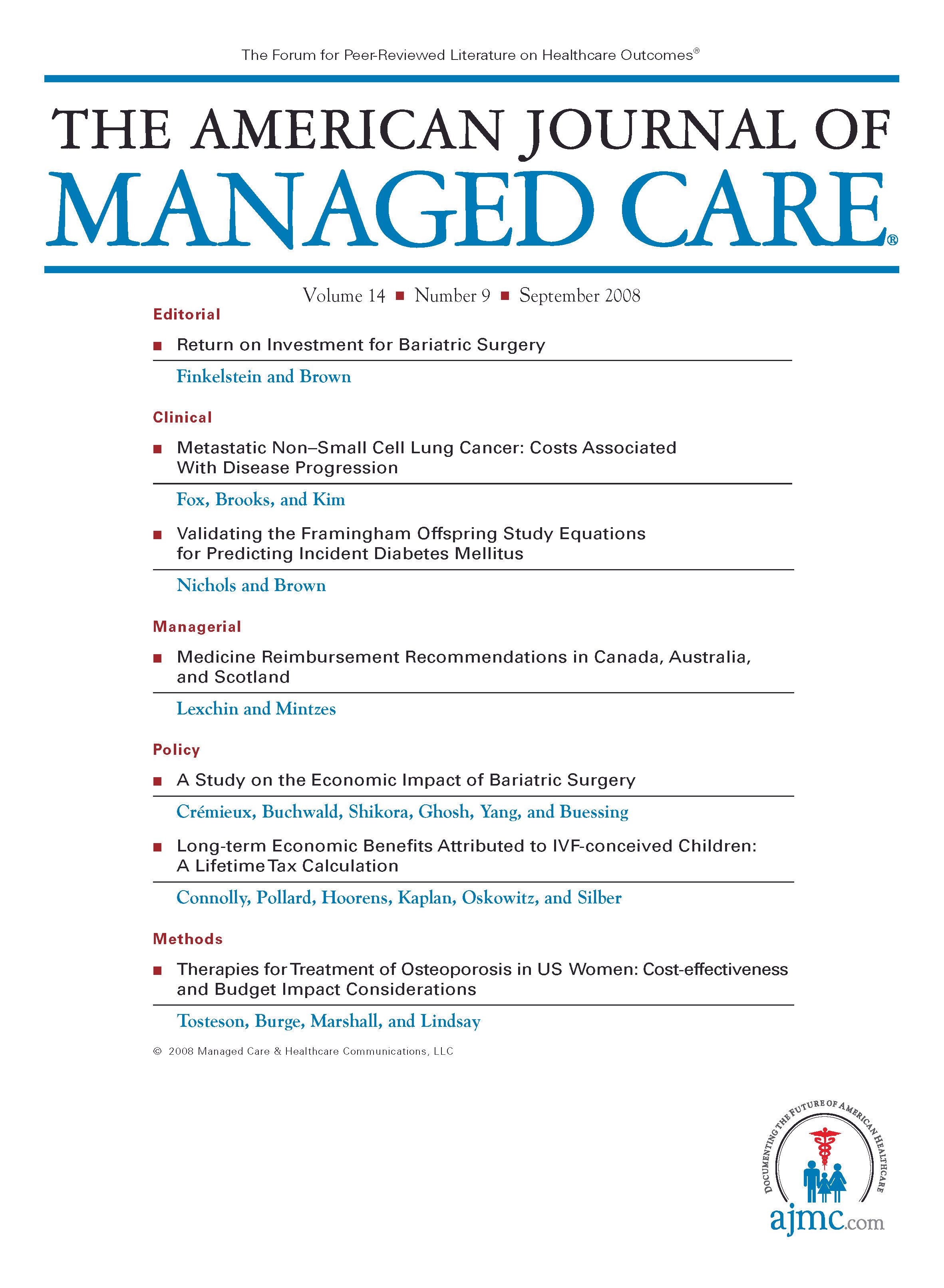- Center on Health Equity and Access
- Clinical
- Health Care Cost
- Health Care Delivery
- Insurance
- Policy
- Technology
- Value-Based Care
Failure to demonstrate an impact of computerized physician order entry embedded reminders
TO THE EDITORSThe article by Palen et al, in the July issue of The American Journal of Managed Care, which failed to demonstrate an impact of CPOE embedded reminders, was disappointing but not surprising.1 In this study, nonintrusive reminders for recommended laboratory monitoring were provided. There was no difference between the control and intervention group, as the results were dismal in each. Providers in both groups failed to order recommended laboratory tests almost half the time. Of the potential reasons offered for the failure of the intervention, none address the primary motivators in determining physician behavior. It is commonly accepted that physicians respond to 2 primary motivators–comparison to peers and financial gain. If the goal is adherence to recommended laboratory monitoring or other guidelines, a more effective adoption strategy would include prominently displaying compliance rates and attaching meaningful compensation to achieving desired outcomes.
Michael Patmas, MDMedical Director & VP of Medical Affairs
2650 Courtney Dr
E-mail: mpatmas@coihs.com
Reference
We agree with Dr. Patmas that "pay-for-performance" and peer comparisons are techniques that have proved useful in modifying physician behavior in practice. The peer comparison is a tool we currently use in our organization to show how clinical departments and individual physicians "perform" in comparison to their peers. However, the purpose of the current study was not to investigate how peer comparisons or "pay-for-performance" incentives can change physician behavior, but rather to evaluate the effectiveness of nonintrusive instructions / alerts within a computer physician order entry system at the point of care. We felt that adding an additional incentive program would introduce a second variable into the study design that could influence the results, thus making it difficult to interpret the impact of our primary intervention–introduction of noninstrusive alerts.
Ted E. Palen, MD, PhD, MSPHClinical Research UnitColorado Permanente Medical Group
E-mail: ted.e.palen@kp.org


